Nationwide pulled a “Debby Downer” during last night’s Superbowl, and the ad went over like an ISIS beheading at a Circus. Here’s the commercial, titled “Boy.”
Here are a few of my favorite memes. Yours?
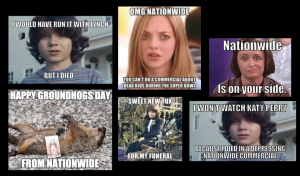
Nationwide pulled a “Debby Downer” during last night’s Superbowl, and the ad went over like an ISIS beheading at a Circus. Here’s the commercial, titled “Boy.”
Here are a few of my favorite memes. Yours?

Mother’s everywhere are mourning the loss of their young boys as they become a man. And in this Old Spice “Mom Song” commercial, they’re singing as they stalking their children, clutching to their cars while riding laundry bins, and showing up in odd places like beaches and cafeteria
A superbowl commercial website is calling this ad creepy, but it’s absolutely my favorite Old Spice ad since Mustafa’s “this is what your man could smell like” viral hits of 2009 and 2010. I hope the agency (still Wieden and Kennedy) runs it on the 2014 Superbowl. There’s a also a shorter alternative with a woman popping her head from a bowling ball machine.
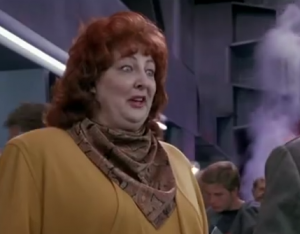
My day job, when not a Viral Video Genius, is insights strategy at an advertising agency (which works in healthcare and has nothing to do with this spot). I’ve worked with P&G but not in many years.
So I like to try to imagine what “insights” drove this campaign. Here’s my guess:
So the creative challenge was likely to win over moms by satirizing the clingy mom who won’t let their kids grow up. “You, dear shopper, do not look like Arnold in drag in Total Recall.”
Note what the spot doesn’t do: it’s not telling moms to “let go,” or “buy Old Spice to help them get the girls,” which would have the opposite of the desired effect. This just in: seems I called it right according to this AdAge piece that attributes the song to musical agency “Walker.”
What ya think? Love it like me? Freaked by it? Think it will work?
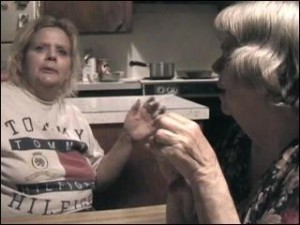 Digiday writer Saya Weissman lists Bank of America in the top-5 brand fails on Twitter, and I just had my own amusing experience with the bank. Today’s lesson for brands is simple: while it can’t hurt to integrate your customer service help desk with your social media efforts, you probably shouldn’t have customer service reps manning the Twitter voice.
Digiday writer Saya Weissman lists Bank of America in the top-5 brand fails on Twitter, and I just had my own amusing experience with the bank. Today’s lesson for brands is simple: while it can’t hurt to integrate your customer service help desk with your social media efforts, you probably shouldn’t have customer service reps manning the Twitter voice.
I’d characterize Bank of America’s Twitter voice as “well intentioned but lacking mental clarity.” But we can’t judge or condemn the bank! It’s kinda like an aging grandmother who may not be completely lucid, but she certainly means no harm.
Weissman’s gave BOA a “fail” because the bank provided a human but robotic response (“we’d be happy to review your account“) to tweets by activist Mark Hamilton (@darthmarkh). Hamilton, of course, wasn’t exactly keen to discuss an account. He had been tweeting about being chased away from a Bank of America by cops… it seems Hamilton had been drawing an anti-foreclosure message on the sidewalk.
My recent experience with the bank was almost as strange. Yesterday I saw that Bank of America television commercial (“Flowers“) featuring a dude bringing his gal a bouquet of flowers. Inexplicably the dude decides just one flower will do, so he leaves the rest in his cab.
My reaction to the ad wasn’t quite “I need to open a Bank of America account.” I was more thinking “I wonder what the next cab passenger thought when he found a bouquet of flowers in an otherwise empty cab?” So I tweeted: “I found the rest of the dude’s flowers in a cab. Can I keep them?” I didn’t expect a response, and frankly I was pleased to have one.
Naturally, my Tweet made absolutely no sense to anyone but me. That’s quite often my MO on Twitter. So we can’t blame Bank of America for asking for account details for clarity, right (“I’m not sure I understand the question… please send me a DM with more detail.” It’s just an odd response that sounds more SIRI than human. The logic appears to be: “when in doubt, a comment about our bank is probably an inquiry to discuss an account.” Hey that’s cool, though. The next time I have a problem with my account… I’ll just tweet something like: “increase my credit by $5K.”
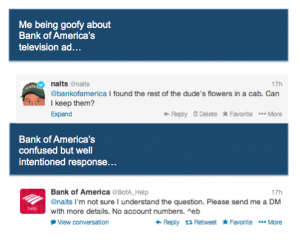
Note the name of this online-video preroll ad on YouTube. “Droid Razr Maxx by Motorola- TV Commercial.” It’s like saying:
“Not only are we too lazy to tweak this ad for this medium, we’re just going to call it a TV ad. So suck it, YouTuber.”
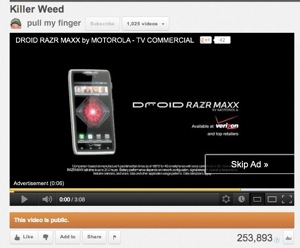
My marketing teacher used to say that cows sell. But that was 1990. In the 2010s, cat sell. Take it from the Catvertising Agency (JohnSt)
My “Cute Kitten” video is at 35 million views, so I’m gonna have to agree with the Catvertising agency.
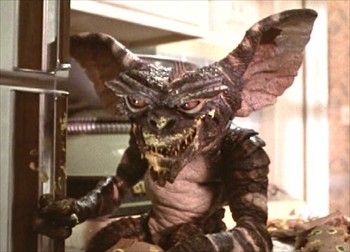
While preparing for an article for ReelSEO, I happened to be watching Gremlins (1984). I couldn’t help but see the parallels between YouTube changes and the cute and fuzzy Mogwai’s mutating into the entertaining but deadly Gremlins (pictured here). We’re about to see YouTube go “pro” in an extreme form, and that’s one of the biggest changes the video-sharing site has made in its history.
Don’t get me wrong. I like change. Even if it involves some interim puss-oozing pods during the “pupil” stage. And while I mourn for my RIP and decaying fellow independent creators (and my own channel), I am excited to see how YouTube/Google becomes a cable network despite the significant battles by studios, networks and serious content producers. It’s inevitable progress… even though I’ll miss the community (but they’re there somewhere, right?).
This post will be somewhat jumbled since my thoughts for the ReelSEO piece are still sorting themselves out. I would also value some input from people who’ve been watching YouTube’s transitions even more closely than me.
Some facts & phases of YouTube’s evolution (with considerable help from Urgo6667‘s ugly but robust SocialBlade data repository)
But as 2011 progressed, YouTube changes resulted in views spread out in cryptic ways. Some YouTube channels have taken significant hits from these changes in which videos appear in powerful areas such as search results, “related videos” and “spotlights.”
I’ve shared my own sharp decline since September (in October I averaged 64% fewer views then 3 months ago), but this chart from once-popular HotForWords tells a typical story…
Fall of Pioneers… The decline of solo creators is not unlike the fate of Indie singers online… as viewers shifted to mainstream content that arrived late to the party. But check out some non-trivial examples:
Thoughts? Observations? Insights? Bring ’em. And thanks mystery man (you know who you are).
Yes. Video prerolls are both growing and declining. The good news for viewers is that we saw fewer prerolls. But we saw more “polite prerolls” (option to escape) in Q1 2011 as reported by AdoTube/eMarketer. Since this doesn’t include YouTube data and presumably a small sample of total online-video ad streams it does need to be taken with a grain of (Morton’s: when it rains it pours!) salt.
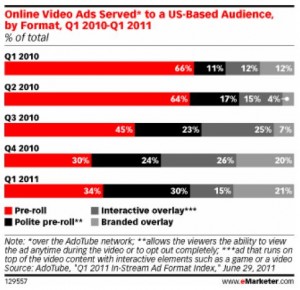
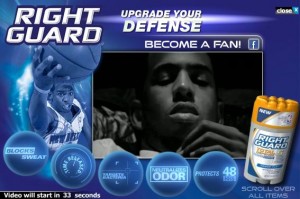
Forget prerolls, friends. The increasingly competitive ad networks have a whole sleuth of weapons in their online-video ad formats that range from the innocuous “polite pre-roll,” to a bit more ominous names like in-stream takeover, ad selector, in-stream skin, inside-out roll, interactive overlay, video-in-video, interactive gaming overlay, data entry and capture, branded player, over the top, and beyond stream. I believe that Seroquel example, placing a “reminder” ad without “fair balance” adjacent to depression content is (shhh) a violation of FDA guidelines, but I digress. ANY of these ad-format names beats the “fat boy” branded by Point Roll.
Take a look at some of the bold “engagement” formats presented in AdoTube’s ad-format gallery and you’ll see why viewers are, according to eMarketer, about 30% likely to engage in an ad… even when not forced (hence the term “polite”). You’ll also see that it’s often not clear there’s an opt-out available.
The eMarketer report, titled “Options for Online Video Ad Viewers Leads to Higher Engagement” is encouraging. With online video being one of the leading (if not #1) fastest-growing portion of a marketer’s “media mix,” advertisers will want and expect formats that achieve their goals: from branding to engagement. This chart is important to viewers because it shows that “cost per impression” remains the dominant percent of spending. In “cost per impression” (often called CPM, or cost-per-thousand), the advertiser simply pays a few bucks to reach 1,000 eyeballs without much accountability.
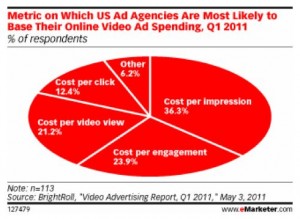
While few of us welcome more aggressive online-ads, this also substantiates a business model to fuel the medium’s growth. While it’s easy to complain about intrusive ads (especially as the pendulum seemed to swing dangerously to the advertiser’s benefit in the past year), it’s a vital element to online-video’s maturity. If the advertisers don’t get what they need, friends, we won’t be seeing our content for free.
There are three ways to increase “engagements” in this online-video advertising medium, and I’ll list them from best to worst in order of sustainability: novelty, creative and targeting:
So what are the takeaways to advertisers, video sites and us viewers?
YouTube puts Yahoo and even About.com for the most intrusive ad campaign in the history of online-video advertising: Kung Fu Panda 2.
While it’s not exactly consistent with Google’s ad model (subtle and relevant) it wins a few points for creativity. And hey… What would YOU do to market this Dreamworks sequel?
http://mashable.com/2011/05/11/kung-fu-panda-2-youtube/
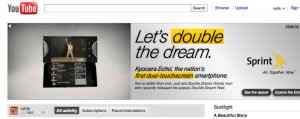
Who’s that guy in the green shirt dancing in Sprint ads? Well you heard about “double dream hands” guy here first, right? (Heck I even own one of his yellow shirts).
Now he’s back with “double dream feet,” which appearance in a Sprint television ad (and, above, as repurposed on YouTube). He’s John Jacobson, and his new YouTube channel is here.
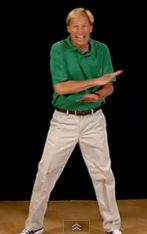
The White House Correspondents’ Association dinner is a historic break from the tension between the White House and the media covering it. This year President Barack Obama joked about a sequel to the film the King’s Speech. Here’s the video that was shared, and it’s a clever self-deprecating parody of the film, and shows rare out takes of the president’s recorded addresses.
When I worked at Georgetown, President Clinton (an alumnus) sent some video footage to us for an event, and there were a number of outtakes they included. I wonder what I might have done with those had YouTube existed in the early 1990s.